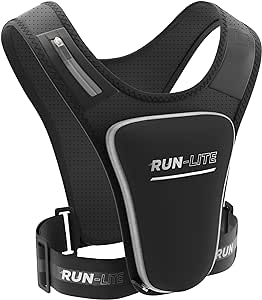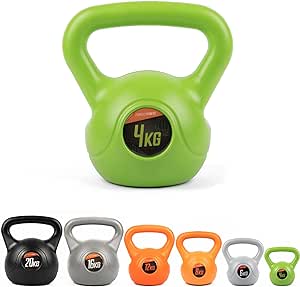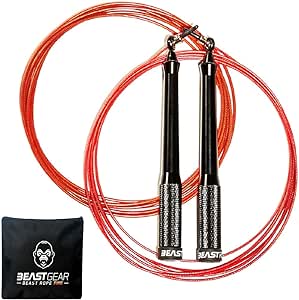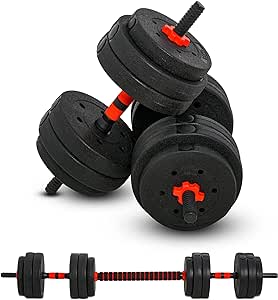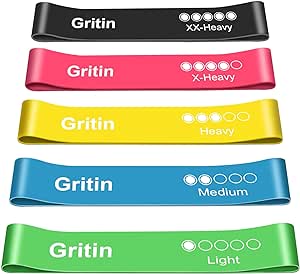WHAT IS PLYOMETRICS?
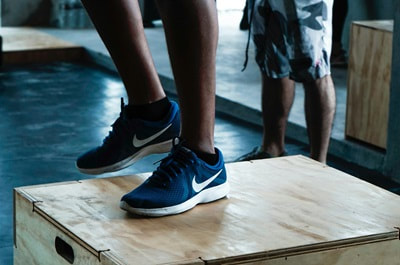
Plyometrics refer to a specific type of training that focuses on developing muscular power and explosiveness through rapid, high-intensity movements and the stretch-shortening cycle.
Plyometrics can be defined as:
Plyometrics are a type of exercise that involve rapid, powerful movements to increase muscle power and explosiveness. The key characteristics of plyometrics are:
1. They involve a rapid stretching of the muscle (eccentric contraction) immediately followed by a rapid shortening (concentric contraction) of the same muscle group. This is known as the stretch-shortening cycle.
2. The goal is to increase the ability of muscles to generate maximum force in a short period of time, improving power and speed.
3. Common plyometric exercises include various types of jumps, hops, bounds, and throws that require the muscles to exert maximum force.
4. Plyometrics were originally developed by Soviet sports scientists in the 1960s and 1970s, particularly by Yuri Verkhoshansky, who pioneered the "shock method" of plyometric training.
5. The term "plyometrics" was coined by American track coach Fred Wilt in the 1970s after observing Soviet athletes using these explosive training techniques.
6. Plyometrics are widely used by athletes in sports that require power, speed, and explosiveness, such as track and field, basketball, volleyball, and various other sports.
plyometrics refer to a specific type of training that focuses on developing muscular power and explosiveness through rapid, high-intensity movements and the stretch-shortening cycle.
Plyometric Citations:
[1] https://www.webmd.com/fitness-exercise/a-z/what-is-plyometrics
[2] https://en.wikipedia.org/wiki/Plyometrics
[3] https://www.healthline.com/health/exercise-fitness/plyometric-exercises
[4] https://www.health.harvard.edu/blog/plyometrics-three-explosive-exercises-even-beginners-can-try-202308022960
[5] https://www.ncbi.nlm.nih.gov/pmc/articles/PMC4637913/
Plyometrics can be defined as:
Plyometrics are a type of exercise that involve rapid, powerful movements to increase muscle power and explosiveness. The key characteristics of plyometrics are:
1. They involve a rapid stretching of the muscle (eccentric contraction) immediately followed by a rapid shortening (concentric contraction) of the same muscle group. This is known as the stretch-shortening cycle.
2. The goal is to increase the ability of muscles to generate maximum force in a short period of time, improving power and speed.
3. Common plyometric exercises include various types of jumps, hops, bounds, and throws that require the muscles to exert maximum force.
4. Plyometrics were originally developed by Soviet sports scientists in the 1960s and 1970s, particularly by Yuri Verkhoshansky, who pioneered the "shock method" of plyometric training.
5. The term "plyometrics" was coined by American track coach Fred Wilt in the 1970s after observing Soviet athletes using these explosive training techniques.
6. Plyometrics are widely used by athletes in sports that require power, speed, and explosiveness, such as track and field, basketball, volleyball, and various other sports.
plyometrics refer to a specific type of training that focuses on developing muscular power and explosiveness through rapid, high-intensity movements and the stretch-shortening cycle.
Plyometric Citations:
[1] https://www.webmd.com/fitness-exercise/a-z/what-is-plyometrics
[2] https://en.wikipedia.org/wiki/Plyometrics
[3] https://www.healthline.com/health/exercise-fitness/plyometric-exercises
[4] https://www.health.harvard.edu/blog/plyometrics-three-explosive-exercises-even-beginners-can-try-202308022960
[5] https://www.ncbi.nlm.nih.gov/pmc/articles/PMC4637913/
the key benefits of doing plyometric exercises
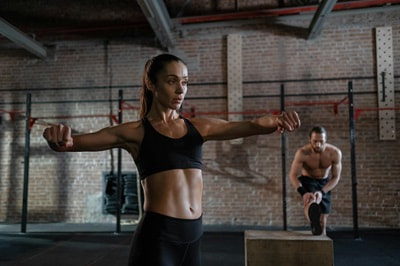
- Increasing power, speed, and explosiveness: Plyometrics train the muscles to generate force rapidly, improving power output and the ability to perform explosive movements.
- Improving cardiovascular fitness: Plyometric exercises can significantly increase heart rate, providing a cardiovascular training stimulus.
- Burning calories and boosting metabolism: The high-intensity nature of plyometrics helps burn a large number of calories, even after the workout is completed.
- Strengthening bones and joints: The high-impact nature of plyometrics helps stimulate bone density and strengthen connective tissues, reducing injury risk.
- Enhancing muscular strength and force development: Plyometrics train the muscles to produce more force through the stretch-shortening cycle.
- Improving coordination and balance: The complex, multi-joint movements in plyometrics help develop neuromuscular coordination and kinesthetic awareness.
- Providing an efficient, time-saving workout: Plyometric exercises can be incorporated into high-intensity interval training (HIIT) routines for a time-efficient workout.
EXAMPLES OF PLYOMETRIC EXERCISES
Here are a few examples of plyometric exercises used by our Pro London coaches:
1. Jumping Exercises:
- Squat jumps
- Box jumps
- Depth jumps
- Tuck jumps
2. Hopping Exercises:
- Ankle hops
- Knee tucks
- Single-leg hops
- Skater hops
- Frog jumps
3. Throwing Exercises:
- Medicine ball chest passes
- Rotational medicine ball throws
- Underhand medicine ball throws
4. Upper Body Plyometrics:
- Clapping push-ups
- Explosive push-ups
5. Combination Exercises:
- Kneeling to standing explosive jumps
- Jumping split lunges
The search results emphasize that plyometric exercises are characterized by rapid, powerful movements that involve a stretch-shortening cycle to develop muscular power and explosiveness. These exercises are commonly used by athletes in sports that require speed, agility, and high-velocity strength.
1. Jumping Exercises:
- Squat jumps
- Box jumps
- Depth jumps
- Tuck jumps
2. Hopping Exercises:
- Ankle hops
- Knee tucks
- Single-leg hops
- Skater hops
- Frog jumps
3. Throwing Exercises:
- Medicine ball chest passes
- Rotational medicine ball throws
- Underhand medicine ball throws
4. Upper Body Plyometrics:
- Clapping push-ups
- Explosive push-ups
5. Combination Exercises:
- Kneeling to standing explosive jumps
- Jumping split lunges
The search results emphasize that plyometric exercises are characterized by rapid, powerful movements that involve a stretch-shortening cycle to develop muscular power and explosiveness. These exercises are commonly used by athletes in sports that require speed, agility, and high-velocity strength.
Q. how long should you do plyometric exercises for?
The recommended duration and frequency for performing plyometric exercises are:
- Plyometric exercises should not be done every day. The search results recommend performing plyometric training no more than 2-3 times per week.
- The nervous system needs 48-72 hours to recover between high-intensity plyometric workouts. 1 2 4 Doing plyometrics more frequently can lead to overtraining and increased injury risk.
- For each plyometric training session, the recommended volume is relatively low - typically 3-6 sets of 2-5 repetitions per exercise. 1 5
- The intensity and impact of the plyometric exercises should be considered when determining the training frequency. Higher intensity exercises like depth jumps may require 48-96 hours of recovery, while lower intensity plyometrics can be done more frequently. 4
- Plyometric training should be integrated into a periodized training program, with the volume and intensity progressed over time to avoid overtraining. 1
WHAT ARE THE differences between plyometrics and calisthenics?
The main key difference is that plyometrics are high-intensity, explosive exercises that develop power, while calisthenics are lower-intensity bodyweight exercises that build muscular strength and endurance.
1. Intensity and Explosiveness:
- Plyometrics involve high-intensity, explosive movements like jumps, hops, and throws that focus on developing power and speed.[1][2][3][4]
- Calisthenics, on the other hand, are generally lower-intensity bodyweight exercises that focus more on building muscular strength and endurance.[1][2][3][4]
2. Muscle Fiber Recruitment:
- Plyometrics primarily target and develop the fast-twitch muscle fibers responsible for power and explosiveness.[1][2][4]
- Calisthenics tend to recruit a greater mix of slow-twitch and fast-twitch muscle fibers, leading to more balanced muscular development.[1][2][3]
3. Joint Impact and Stress:
- Plyometric exercises place higher levels of stress and impact on the joints, especially the knees and ankles, due to the jumping and landing movements.[3][4]
- Calisthenics exercises are generally lower-impact, making them more suitable for those with joint issues or injuries.[3]
4. Equipment Requirements:
- Plyometrics often require specialized equipment like boxes, hurdles, and medicine balls to perform the exercises.[1][3][4]
- Calisthenics can be performed with just the individual's own bodyweight, requiring minimal to no equipment.[1][2][3]
5. Training Goals:
- Plyometrics are better suited for athletes and individuals looking to improve power, speed, and explosiveness for sports performance.[1][2][4]
- Calisthenics are more focused on building overall muscular strength, endurance, and functional fitness.[1][2][3]
Plyothetics vs Calisthenics Citations:
[1] https://www.inspireusafoundation.org/plyometrics-vs-calisthenics/
[2] https://betterme.world/articles/plyometrics-vs-calisthenics/
[3] https://dubaipt.com/plyometrics-calisthenics-difference/
[4] https://www.healthdigest.com/626919/plyometrics-versus-calisthenics-which-one-should-you-choose/
[5] https://www.ramfitness.com/blog/is-it-calisthenics-or-plyometrics
1. Intensity and Explosiveness:
- Plyometrics involve high-intensity, explosive movements like jumps, hops, and throws that focus on developing power and speed.[1][2][3][4]
- Calisthenics, on the other hand, are generally lower-intensity bodyweight exercises that focus more on building muscular strength and endurance.[1][2][3][4]
2. Muscle Fiber Recruitment:
- Plyometrics primarily target and develop the fast-twitch muscle fibers responsible for power and explosiveness.[1][2][4]
- Calisthenics tend to recruit a greater mix of slow-twitch and fast-twitch muscle fibers, leading to more balanced muscular development.[1][2][3]
3. Joint Impact and Stress:
- Plyometric exercises place higher levels of stress and impact on the joints, especially the knees and ankles, due to the jumping and landing movements.[3][4]
- Calisthenics exercises are generally lower-impact, making them more suitable for those with joint issues or injuries.[3]
4. Equipment Requirements:
- Plyometrics often require specialized equipment like boxes, hurdles, and medicine balls to perform the exercises.[1][3][4]
- Calisthenics can be performed with just the individual's own bodyweight, requiring minimal to no equipment.[1][2][3]
5. Training Goals:
- Plyometrics are better suited for athletes and individuals looking to improve power, speed, and explosiveness for sports performance.[1][2][4]
- Calisthenics are more focused on building overall muscular strength, endurance, and functional fitness.[1][2][3]
Plyothetics vs Calisthenics Citations:
[1] https://www.inspireusafoundation.org/plyometrics-vs-calisthenics/
[2] https://betterme.world/articles/plyometrics-vs-calisthenics/
[3] https://dubaipt.com/plyometrics-calisthenics-difference/
[4] https://www.healthdigest.com/626919/plyometrics-versus-calisthenics-which-one-should-you-choose/
[5] https://www.ramfitness.com/blog/is-it-calisthenics-or-plyometrics
Shop for PRO COACHING Equipment
Buy coaching and training equipment to help with your stamina and overall fitness.
Pro Coach London
PRO COACH LONDON - YOUR SPORTING GOALS ARE OUR BUSINESS - GETTING YOU TO THE PEAK OF YOUR GAME
Copyright © 2024 www.procoachlondon.co.uk Personal Fitness Trainers, Coaches and Instructors in Central & South West London.
This website is managed and optimized by SEO Consultant Zach Mendelsohn from the London based SEO company Best SEO London.

